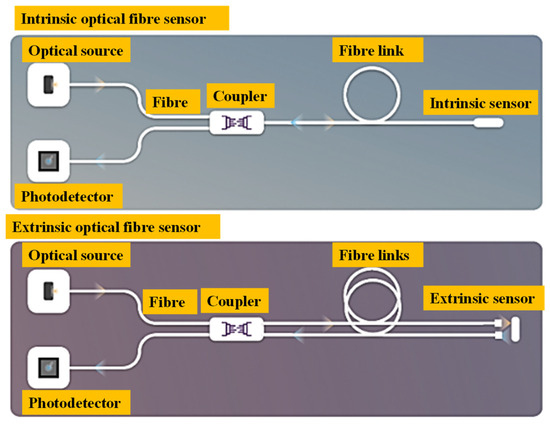The Role of an Optical Fibre Diameter Analyser in Product Inspection
The Role of an Optical Fibre Diameter Analyser in Product Inspection
Blog Article
Enhance Your Fibre Optic Projects With a Reliable Diameter Analyser
The integration of a reliable diameter analyser into fiber optic jobs serves as a critical element in attaining precision and uniformity. By helping with exact size measurements, these analysers not only improve the quality of installments but also mitigate possible compatibility concerns amongst parts.
Importance of Diameter Measurement
Gauging the diameter of fiber optic cable televisions is a critical job that guarantees optimal performance and reliability in interaction systems. Accurate size dimension is essential for numerous reasons, largely for preserving signal stability and decreasing loss. A cable's size directly influences its capability to send light successfully; discrepancies from the defined diameter can lead to raised attenuation, which influences the total efficiency of the network.
Furthermore, exact measurement is crucial during the setup and maintenance of fiber optic systems. An incorrect fit in between cables and connectors can lead to signal deterioration or full failure of communication web links. By making sure that diameters are within defined tolerances, service technicians can boost compatibility between parts, causing improved system dependability.
Furthermore, diameter dimension plays a considerable function in quality assurance throughout manufacturing. Consistency in the size of fibre optic wires is essential for making certain consistent performance throughout different sets. optical fibre diameter analyser. This uniformity aids producers keep sector requirements and promotes confidence amongst end-users
Attributes of an Efficient Analyser
An effective analyser for fiber optic jobs must integrate a number of crucial functions that enhance accuracy and functionality in diameter measurement. Firstly, high-resolution optical sensors are vital for exact diameter analyses, enabling users to spot also the least variations in fiber density. These sensors should be enhanced by advanced calibration systems, making certain regular efficiency across various problems and materials.
Secondly, an easy to use interface is critical for assisting in simplicity of operation. This consists of user-friendly software program that permits seamless data input and output, together with graphes of the measurements taken. A mobile design improves usability in numerous field settings, making it simpler to carry out analyses on-site.
Furthermore, the analyser should sustain several dimension settings, suiting numerous fibre types and applications. The capacity to shop and retrieve historic data is another vital function, enabling individuals to track performance gradually and make educated decisions.
Advantages for Fibre Optic Projects
Executing a size analyser in fibre optic tasks provides significant advantages that considerably improve job effectiveness and top quality. Among the key advantages is the capability to guarantee specific dimensions of fiber size, which is vital for keeping optimum performance in fiber optic systems. Precise size analyses assist in the recognition of disparities that might result in indicate degradation or loss, therefore ensuring high-quality transmission.
In addition, making use of a size analyser improves the quality assurance procedure. By automating measurement tasks, task groups can lower the time invested in hands-on evaluations, causing faster project conclusion and minimized labour costs. This efficiency likewise permits more rigorous screening procedures, resulting in boosted product dependability.
Additionally, consistency in fiber size measurements advertises compatibility with other fibre optic parts, decreasing the danger of setup mistakes and boosting overall system performance. The unification of a size analyser not just help in maintaining market criteria but additionally cultivates self-confidence in task deliverables.
Combination Into Existing Process
Integrating a size analyser right into existing process can dramatically boost the operational performance of fibre optic projects. By seamlessly including this modern technology, groups can accomplish exact dimensions that are crucial to preserving the honesty and performance of fiber optic systems. This assimilation enables real-time data collection and analysis, which can be vital throughout the manufacturing and installment stages.
Additionally, the ability to automate diameter measurement procedures lowers the possibility for human error, ensuring regular quality control throughout the job lifecycle. The information created can be quickly shared across platforms, helping with collaboration among designers, technicians, and task supervisors. This accessibility improves decision-making and speeds up task timelines.

Picking the Right Diameter Analyser
When selecting a size analyser for fiber optic tasks, it is important to think about several crucial variables that straight impact dimension accuracy and operational effectiveness. First, the resolution and accuracy of the analyser must line up with the details requirements of your job. Higher resolution instruments can detect minute variants in size, which is vital for ensuring optimal performance in fibre optic systems.
For projects with tight deadlines, a diameter analyser that offers rapid information acquisition can substantially boost performance. In addition, think about the analyser's compatibility with existing systems and software.
One more crucial aspect is the variety of sizes the analyser can accommodate. By very carefully assessing these variables, you can pick a size analyser that improves the efficiency and precision of your fibre optic projects.
Verdict
To conclude, the assimilation of an efficient diameter analyser is critical for improving fiber optic jobs. Accurate size dimensions make certain optimum efficiency and reliability while decreasing installation mistakes. Advanced features assist in real-time data collection and compliance with industry standards, eventually elevating the quality of deliverables. By focusing on the choice and implementation of an appropriate analyser, task performance is substantially improved, leading the way for successful results in fiber optic applications.
A cable television's size directly affects its capacity to transmit light properly; discrepancies from the defined size can lead to raised attenuation, which affects the overall efficiency of the network.

Report this page